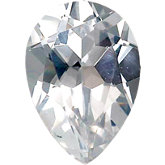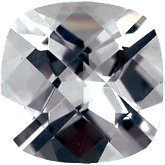Learn About The Pros and Cons of Lab-Created Diamonds
Lab-created diamonds are prominently known as synthetic or cultured diamonds. These diamonds, although cultivated in labs, are neither termed as duplicate nor natural. They are true authentic diamonds that can easily be differentiated from the diamond simulants such as moissanite and cubic zirconia (cz). These diamond pieces unlike the diamond simulants have exactly identical chemical, physical, and optical properties of the natural mined diamonds.
In this Blog, we have discussed the pros and cons of the lab-created diamonds. Let us have a look.
Pros
1. Eco-friendly: Lab-grown diamonds, unlike other diamonds can be stated as eco-friendly diamonds. This is because they contribute a lot as nature's protection shield. Since the diamonds are created in the laboratory using advanced modern technologies and methods, there is no chance of upsetting the mother earth by creating destruction or pollution. Even they use comparatively less amount of energy to create the same atmosphere of high temperature and high pressure like the earth provides natural diamonds while their production. In order to imitate the natural process, the man-made methods may utilize a good amount of energy but it is surely not as much as the earth use. Hence, these diamonds can be purely called eco-friendly diamonds.

2. Relatively less expensive: Natural diamonds are produced rare in nature. They take thousands of years to produce themselves as diamond. To be a bit precise, a diamond that is mined today are formed thousands of years ago. Hence, due to the scarcity of diamonds and the tough mining process make them quite expensive and sometimes unaffordable. Whereas, lab-grown diamonds have a completely different attitude. They possess every property of a real diamond but can be accessed at a reasonable price rate. That is the reason why they are strongly appreciated by budget-friendly buyers.

3. Strongly Ethical: Lab-grown diamonds are ethical and conflict-free. They strongly limit themselves to the Kimberley process' definition that says conflict diamonds are those that can finance rebel movements against the recognized governments. Conflict-free diamonds are not corrupted with violence, human rights abuses, poverty, environmental degradation, and other issues. They are free of all such ethical problems that destroy the wider diamond industry. Instead, these diamonds are known to provide better health and safety standards, and fair wages. They stay far away from the conflict zones.

4. Obtained in Surplus: Unlike the mined diamonds, they are cultivated in the laboratory and so appear in excess. Not just in quantity, they even can be obtained in varied shapes and sizes.
Cons
The only con of these lab-created diamonds, that can even be ignored is, they are slightly less valuable than the natural mined diamonds. Natural mined diamonds possess a sky-high rate, as they maintain an absolute value. In this contrast, the lab-created diamonds do obtain a good resale value but are not as valuable as the diamonds formed in nature.

Cultured diamonds are processed using artificial methods like CVD and HPHT. All these methods do not involve any kind of environmental disorder. In the HPHT process, the diamond seeds are exposed to high temperature and pressure while in the CVD process, diamonds are grown at low pressure with the help of a carbon plasma cloud. Technology has been developed and so the process of cultivating diamonds. As a result, it has really become difficult to find the difference between the lab-grown diamond and the natural mined diamond. Even the jewelers use 10x magnification loupe to create the difference. Otherwise, there is no such visible difference to make out.
